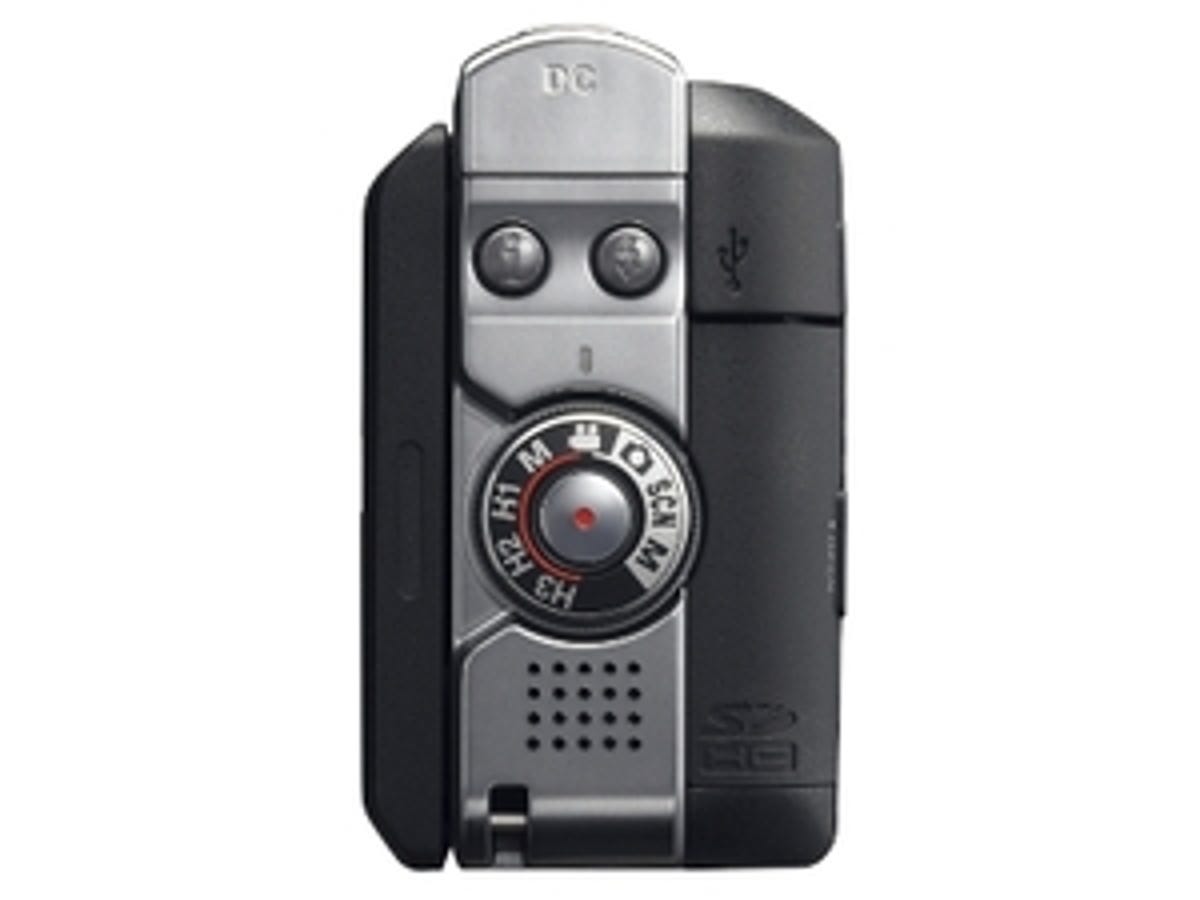 Why You Can Trust CNET
Why You Can Trust CNET JVC Everio GZ-X900 review: JVC Everio GZ-X900
The distinctive design won't be everyone's cup of tea, but the Everio GZ-X900 comes pretty close to being the perfect combination of camcorder and camera, shooting crisp video and sharp photos. You'll have to dig deep though -- this machine doesn't come cheap
A long way from the squat, heavy Everios of yore, JVC's Everio GZ-X900 is a lightweight, slimline, memory-card camcorder, with high-definition (1080i AVCHD) video, high-resolution (9-megapixel) still photo capability and, unfortunately, a high price to match (about £900). A distinctive design and some unique features make it stand out from the crowd.
The Good
The Bad
The Bottom Line
Positives
Given that JVC once proudly labelled itself 'the inventor of VHS', you might have assumed the company would try to cling on to tape formats for as long as possible, but JVC made a comparatively early jump to hard-disk storage with the original line of Everio camcorders. And, while the new GZ-X900 eschews hard disks in favour of SD memory cards, JVC continues to innovate in other areas.
A unique optical image stabiliser design, for instance, places the OIS array in front of the Konica Minolta lens rather than behind it -- you can actually watch the mechanism doing its thing if you tilt the unit from side to side. The idea is that the stabilisation works throughout the entire zoom range, and the stabiliser seems to do its job pretty well, keeping gratuitous wobbling to a minimum.
Also on offer is an intriguing slow-motion setting. In fact, there are three levels of smooth slow motion -- all available via the handy mode dial on the unit's rear edge. It basically works by increasing the number of frames per second to 100, 250 or 500, slowing down the motion by 2, 5 or 10 times respectively. There are a couple of drawbacks to this system though: resolution is lowered exponentially (to 480x270 pixels, 480x116 pixels or 640x72 pixels, depending on the amount of slow motion applied), and only very short bursts of slow motion can be captured.

At full speed, full resolution and full quality (24Mbps), video looks great, with deep, realistic colours, crisp edges and plenty of detail. Not only that, but top-resolution still photos are sharp and detailed too -- the quality is roughly comparable to that of a dedicated digital compact camera. The GZ-X900 even provides a number of useful photo features, including high-speed continuous shooting modes and face-detection technology.
The unit itself has a fairly unusual, but not unattractive, design. It's a slim, sober, matte black affair that's entirely free of any kind of lens barrel. It sits comfortably in the palm and is easy to handle. A mini-HDMI socket allows for connection to an HD television, and a useful dock that functions as a battery charger is provided in the box.
Negatives
Sadly, innovation has a habit of occasionally falling flat on its face. One of the GZ-X900's less successful features is its 'laser touch' menu system. The camcorder doesn't provide a touchscreen interface or even a joystick for the navigation of options and settings. Instead, you're supposed to swipe your finger up and down on a touch-sensitive slider to the left of the 71mm (2.8-inch) LCD display, confirming your selections with one of five conventional buttons that run underneath the screen. It's an unnecessarily fiddly method that takes a long time to get used to and isn't particularly accurate even once you've mastered it.
We're also somewhat disappointed by the optical zoom length -- 5x magnification just doesn't cut the mustard, particularly at this price. And, although the GZ-X900 is a very good camcorder with a number of interesting features, it's hard to justify the £900 price tag, especially in these tough economic times. Video and photo performance are both strong, but it would be entirely possible to buy a dedicated HD camcorder and digital camera separately and still have change left over.
Conclusion
The JVC Everio GZ-X900 is a solid performer that comes very close to being the perfect combination of camcorder and still photo camera. There are bells and whistles aplenty too, but it's hard to swallow the overblown price, especially when a few crucial pieces of the puzzle -- namely 1080p video and a longer zoom -- are missing.
Edited by Charles Kloet


